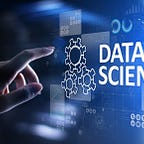“Defining Data: Unraveling the Key Concepts in Data Analysis and Data Science”
DATA
- Datum is the singular form of data. One datum is a single fact that is recorded, measured, or collected through some type of observation, either by humans or machines.
- Data is a collection of recorded, measured, or collected facts. Personal opinions, beliefs, judgments, instincts, and viewpoints aren’t data because they aren’t recorded, measured, or collected facts.
- We can use data to reason, calculate, analyze, make decisions, predict, and plan for the future. The quantity, speed, and availability of data today has changed how businesses operate and how people live.
STRUCTURED DATA
- Structured data is tabular. Structured data has a predetermined format (i.e., tabular) and is represented by rows and columns.
- Tabular data is typically stored in spreadsheets or databases.
UNSTRUCTURED DATA
Data is unstructured when it cannot be fit into a neat organization of rows and columns. Email messages, blog posts, images, audio clips, videos, satellite imagery, location data, sensor readings, and website logs are examples of unstructured data.
It has recently been estimated that more than 80% of all new data produced today is unstructured.
SEMI-STRUCTURED DATA
Semi-structured data doesn’t have the structured format of tabular or spreadsheet data, but it contains some structure in the form of tags and metadata that help people group, describe, and analyze the data.
Metadata provides basic information about the data, such as when and why it was created, who created the data, where the data was created, data file size, and other information.
Unstructured data that is accompanied by metadata becomes semi-structured.
QUANTITATIVE AND QUALITATIVE DATA
- The two most basic data types are quantitative and qualitative data
- Quantitative data is numerical.
- We use numbers to represent quantitative data.
- Quantitative data can be counted or measured. An example of quantitative data is speed because we can measure it (e.g., kilometers per hour).
- Quantitative data is also called numerical data.
- Qualitative data is categorical.
- Qualitative data cannot be counted or measured. Instead, it classifies or categorizes different objects.
- We use names or labels to represent qualitative data. An example of qualitative data is hair color because we name the different categories of hair color (black, brown, blonde, gray, white, etc.).
- Qualitative data is also called categorical data.
- CATEGORICAL DATA: NOMINAL OR ORDINAL
- • Categorical (qualitative) data can be nominal or ordinal. When data is nominal, the categories of the data can be named or listed, but there is no inherent order to them. • For example, car manufacturer is nominal. Car manufacturers can be named (e.g., Honda, Toyota, Nissan, Kia, etc.), but they don’t have an inherent order.
- • Ordinal data has categories, but they can be ordered — from smallest to largest, least to most, worst to best, or in other ordered ways. • For example, T-shirt size is ordinal. We use labels to describe it (e.g., small, medium, large), and these labels can be ordered from smallest to largest.
- NUMERICAL DATA: DISCRETE OR CONTINUOUS
- • Numerical (quantitative) data can be discrete or continuous. Discrete data is counted in whole numbers. Whole numbers do not allow any fractions or decimals. • For example, number of siblings is discrete because we have to use whole numbers to count our siblings (e.g., 1, 2, 3, and so on). It’s impossible to have 2.3 siblings or siblings 2 /3.
- Continuous data can take on any value between two whole numbers. In other words, it can have decimals and fractions. • For example, height and length are continuous, as they allow for and are often measured with decimals (e.g., 125.8 pounds) and fractions (e.g., inches)
